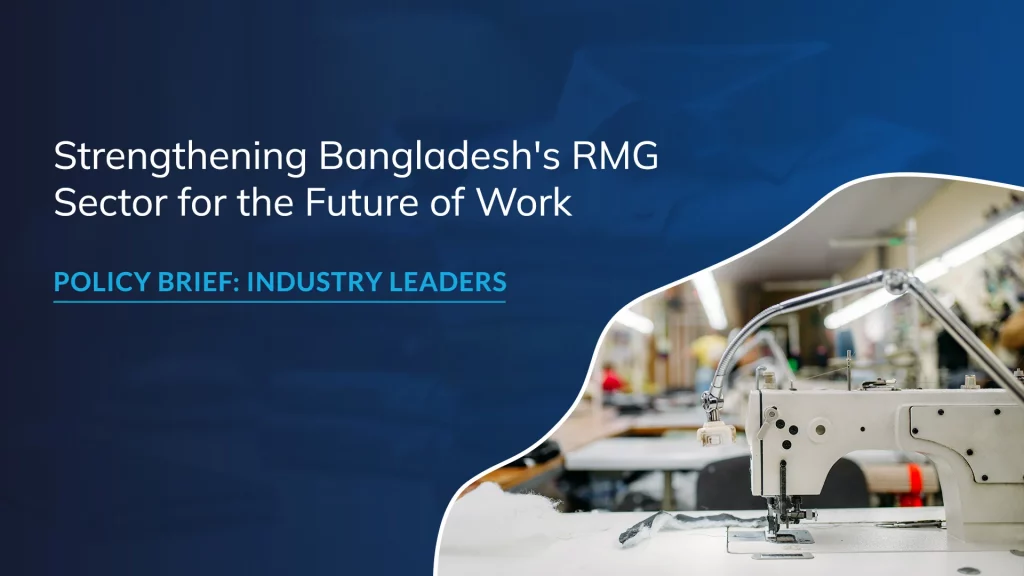
Strengthening Bangladesh’s RMG Sector for the Future of Work: Policy Brief for Industry Leaders
Preparing the RMG Sector in Bangladesh for 2030: Automation, Efficiency, and Sustainability
The Ready-Made Garments (RMG) sector in Bangladesh, ranked as the world’s second-largest, has witnessed substantial growth, primarily in the low-value segment. In 2010-2011, the country became the 2nd largest apparel exporter in the world, and in FY 2022-23 the export was valued at USD 46.99 billion, marking a CAGR growth of 10.27%. This growth has also translated into over 4 million workers directly employed in the industry, with approximately 60% of them being women. This pivotal industry will undergo a significant transformation in its trade benefit regime by 2029 as the GSP moratorium ends, coinciding with Bangladesh’s exit from its Least Developed Country (LDC) status in 2026. Challenges confronting the RMG sector encompass rising labor costs, heightened competition from low-cost nations, and the imperative to improve working conditions and sustainability practices. To effectively align with global demand and mitigate risks, the industry must enhance operational efficiency through automation while fostering an environment that facilitates the workforce’s transition. Currently, less than 15% of its operations are mechanized.1
Triple Transition Involving GSP, Automation, and Circulatory: Opportunities and Challenges for RMG in Bangladesh
In light of global and industry shifts, the RMG sector in Bangladesh faces three important transitions:
- The Phase-Out of the Generalized System of Preferences (GSP)
- The Rapid Advancement of Automation
- The Imperative of Embracing Circulatory
These factors not only drive economic prospects but also entail substantial challenges that necessitate nuanced strategic responses.

|
Interested to learn more? |


 LightCastle Analytics Wing
LightCastle Analytics Wing